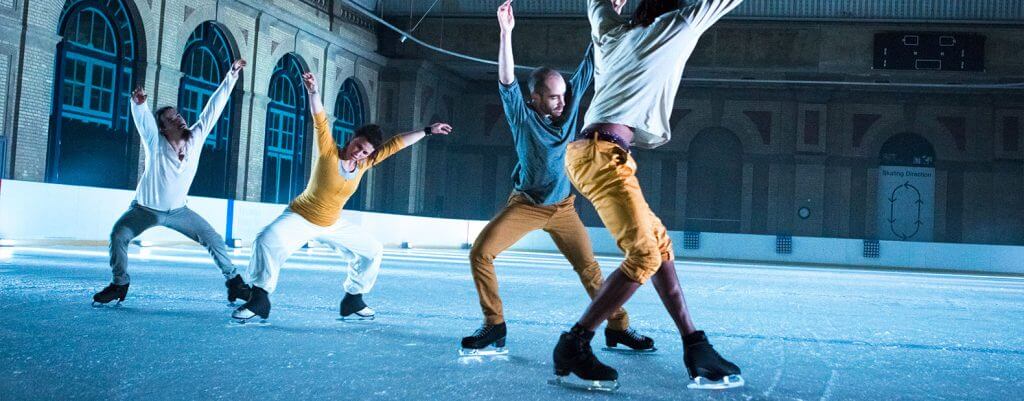Montreal group turns competitive skating into contemporary art
Meet Le Patin Libre
Allyson Aritcheta

Taking to the ice with smooth transitions and ever-changing focal points, contemporary ice skating company Le Patin Libre uses minimalistic choreography to create a performance that founder Alexandre Hamel calls “magical.” The Montreal-based troupe, founded by Hamel in 2005, focuses on providing a skating experience for its audience that’s free from competition and scores.
“It’s a little revolt,” says Hamel, explaining how contemporary skating is another way of looking at skating as an art. “Contemporary arts are made for poetic reasons, not for commercial reasons. There’s a desire of expression, of viewing art as a way to analyze the world, to analyze one’s self. This is what we’re interested in doing, and skating is not our end, but our means of doing so.”
After quitting the figure skating circuit and, later, Disney On Ice, Hamel created Le Patin Libre to preserve his love for skating. Starting on frozen ponds in Quebec, the group has grown into an international act that sets the bar for contemporary skating. Gradually, the members of the present company joined, and a more defined idea of contemporary skating was developed.
At the beginning of the troupe’s journey, the skating artists performed choreography that was heavy with acrobatic stunts set to rock tunes. The group soon broke from their “teenage-like” rebellion of the traditional world of figure skating and became what they are today. “We concentrated on the glide. This is the ultimate identity of skating. This is contemporary ice skating.”
Rediscovering the art of the glide and integrating it into their performances has led Le Patin Libre to the popularity they needed to be able to share their shows with audiences on rinks around the world. Le Patin Libre’s outlook on skating restructures the rink, calling on the spirit of community rather than competition. Hamel says, “Our art not only questions skating, it questions the ice rink in Canadian culture—it’s a big project.”